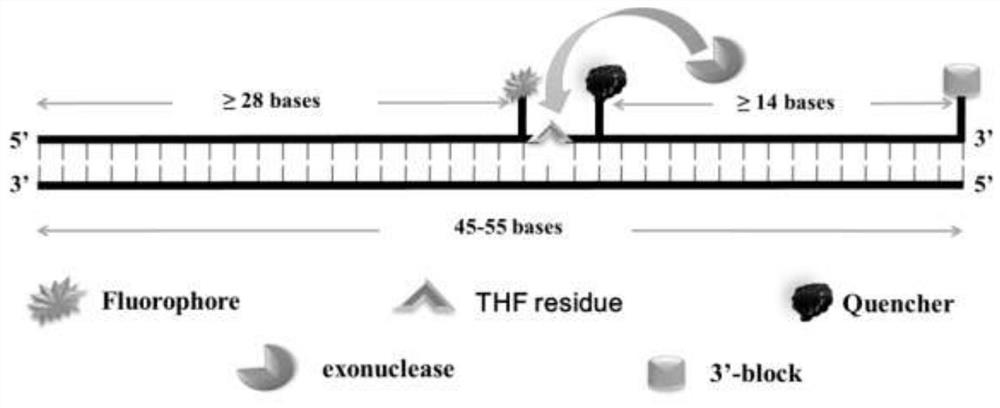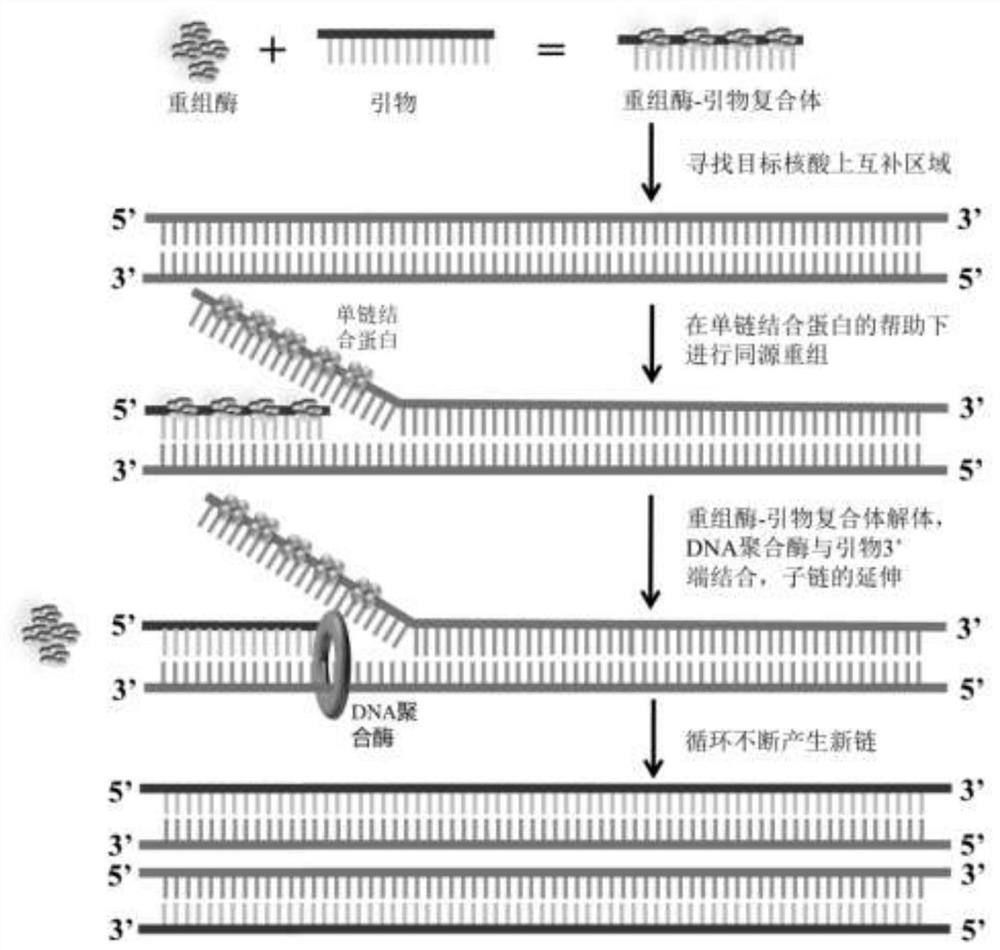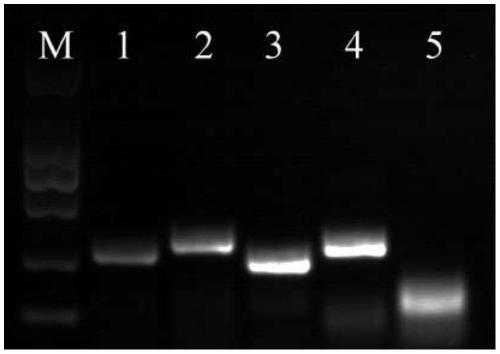Primer, probe and reagent for rapidly detecting vibrio parahaemolyticus at room and isothermal temperature, and method realized through reagent
A room temperature isothermal, hemolytic Vibrio technology, applied in biochemical equipment and methods, microbial determination/inspection, resistance to vector-borne diseases, etc. Effect
- Summary
- Abstract
- Description
- Claims
- Application Information
AI Technical Summary
Problems solved by technology
Method used
Image
Examples
Embodiment 1
[0052] Example 1: Screening of primers
[0053] With reference to the VP tlh gene sequence published on GenBank, the inventors of the present application have carried out relatively in-depth research on the genome and function of TLH of VP. All VP isolates contain thermolabile hemolysin, which is Unique to VP, so its coding gene tlh gene field was used as the target gene to detect VP. A large number of experiments have shown that different primers have a certain influence on the effect and sensitivity of isothermal amplification. Therefore, four pairs of different primers were designed for the tlh gene of VP: VP-1, VP-2, VP-3, VP-4, as shown in Table 1 below.
[0054] Table I
[0055]
[0056] image 3 It is the electrophoretic pattern of the effect of the primers of the present invention on the amplification effect. from image 3 It can be seen from the above that different primers have an impact on the amplification effect, and the brightness of the primer VP-4 is th...
Embodiment 2
[0061] Embodiment 2: Fluorescence detection
[0062] This example is used to illustrate the normal temperature and constant temperature fluorescence reaction performed on the fluorescence instrument.
[0063] 1. According to the published tlh gene sequence of Vibrio parahaemolyticus (VP) on NCBI GenBank, based on the design principles of primers and fluorescent probes, a pair of primers (VP-4-F and VP-4-R) and a fluorescent probe (VP-Probe), the sequences are shown in Table 2:
[0064] Table II
[0065]
[0066] Among them, F is a fluorescent group, H is tetrahydrofuran, B is a quenching group, and the 3' end is labeled with the C3 interarm.
[0067] 2. The amplification reaction system is:
[0068] Table three
[0069]
[0070] *Note: The lyophilized powder reagent contains the necessary enzymes and auxiliary components mentioned above.
[0071] 3. Amplification reaction procedure: 39 degrees constant temperature, 20 minutes.
[0072] The VP template was diluted 10 ...
Embodiment 3
[0073] Example 3: Specificity Test
[0074] It is used to test the specificity of the selected primers, select several other strains, and use the primers VP-4-F, VP-4-R and VP-Probe to detect whether there will be non-specific amplification and interpret false positive results. Vibrio cholerae, Shigella baumannii, Salmonella typhimurium and Pseudomonas aeruginosa were selected respectively, and the VP standard strain ATCC33847 was used as a comparison. The result is as Image 6 As shown in the figure, 1 is the VP standard strain ATCC33847, 2 is Vibrio cholerae, 3 is Shigella baumannii, 4 is Salmonella typhimurium, 5 is Pseudomonas aeruginosa, and NTC is a negative control primer. It can be seen that VP-4-F, VP-4-R and VP-Probe have better specificity and no false positive interpretation results.
PUM
 Login to View More
Login to View More Abstract
Description
Claims
Application Information
 Login to View More
Login to View More - R&D
- Intellectual Property
- Life Sciences
- Materials
- Tech Scout
- Unparalleled Data Quality
- Higher Quality Content
- 60% Fewer Hallucinations
Browse by: Latest US Patents, China's latest patents, Technical Efficacy Thesaurus, Application Domain, Technology Topic, Popular Technical Reports.
© 2025 PatSnap. All rights reserved.Legal|Privacy policy|Modern Slavery Act Transparency Statement|Sitemap|About US| Contact US: help@patsnap.com



